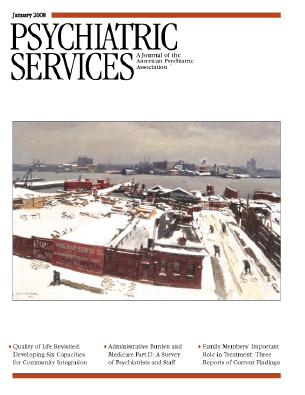Two leading scholars and researchers in the field of mood and psychotic disorders edited this textbook, The Overlap of Affective and Schizophrenic Spectra . The book explores one of the most basic but complex issues facing 21st century psychiatry and is highly recommended for those who treat patients who have mood and psychotic disorders. In practice today in the United States, clinicians have become complacent in terms of thinking seriously about the phenomenology of mood and psychotic disorders. We may need to ask ourselves if we know much more than Kraepelin did at the end of the 19th century.
The editions of the DSM have become more than the guides they were intended to be. In clinical practice we view diagnostic categories as distinct entities. Both the editors and other contributors of this densely packed but readable text continue to question our understanding of the Kraepelinian dichotomy. In the preface, Akiskal points out that Kraepelin himself had doubts: "The symptoms we have used so far are not sufficient to always reliably distinguish between manic-depressive insanity and schizophrenia, but there are overlaps based on the origin of these symptoms from given preconditions." Kraepelin tended to look at symptoms from a longitudinal approach; later attempts were meant to distill symptoms into being pathognomonic of a particular condition.
Akiskal is a professor of psychiatry at the University of San Diego, and Marneros is affiliated with the Department of Psychiatry and Psychotherapy at the Martin Luther University in Halle-Wittenberg, Germany. Marneros has looked specifically at the "in-between" psychotic disorders—such as schizoaffective disorder, late-onset schizophrenia, and brief psychotic disorders—in some detail to tease out possible differences in phenomenology and clinical outcomes in these less classically defined disorders.
The in-between conditions at the interface of the psychotic and mood disorders have continued to be characterized and formulated in different ways. The trend in the United States has been to expand the diagnostic criteria of the schizoaffective disorders, first characterized as a diagnosis by Kasanin in 1933, from the DSM-III in evolution to the DSM-IV-TR .
Further complicating the picture is the lack of consistent evidence from family studies to indicate that the psychotic and affective disorders "breed true." Both psychotic and mood disorders can be found in family members of probands in either diagnostic category. Preliminary gene linkages also show that there are overlapping linkage peaks in bipolar disorder and schizophrenia. The psychopharmacologic treatments of both overlap, especially with the advent of the second-generation antipsychotics.
Finally, no matter how the diagnoses are viewed, the predominant themes appear to become part of the "spectrum"—with schizophrenia being the most affected by biology, temperament, and psychosocial factors and unipolar depression the least, with schizoaffective and bipolar disorders in between in terms of severity. The interface of this spectrum of disorders is not yet understood and needs to be studied further. As Akiskal says in the final chapter, "Lines of evidence have revealed both continuities and discontinuities between the affective and schizophrenic spectra. Perhaps what is 'in-between' represents a cross of the underlying dimensions of the two 'voluminous' spectra, or superposition of some of the contributory factors of one on the other."
One only has to wonder whether efforts could be made to unify the concepts of the ICD-10 with a future edition of the DSM —that is, DSM-V —could be a step in the right direction toward guiding future research in terms of the diagnostic characterization of mood and psychotic disorders.

